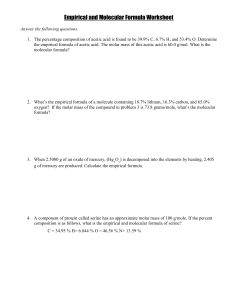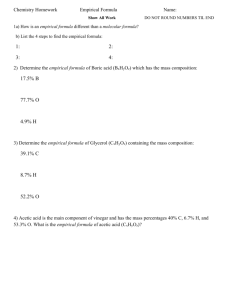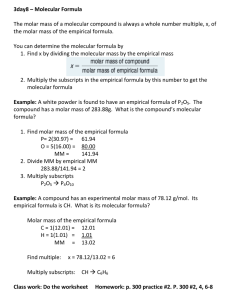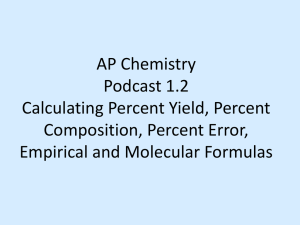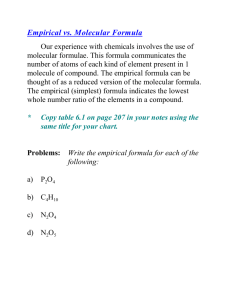Empirical and Molecular Formulas Worksheet 1 1. The percentage
advertisement
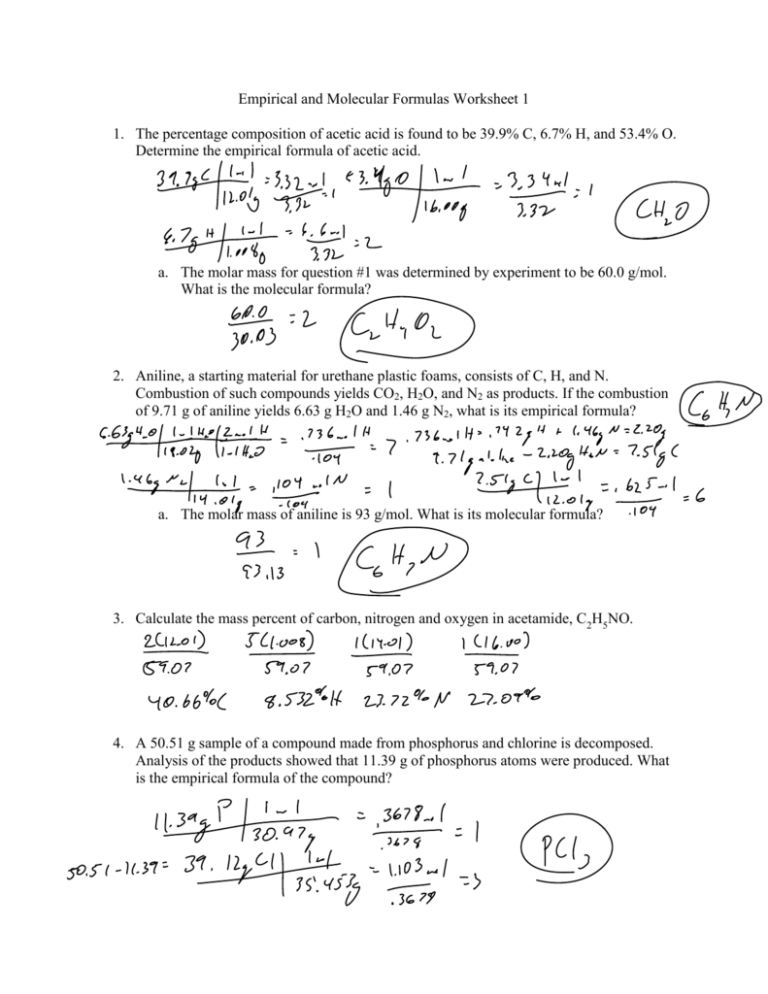
Empirical and Molecular Formulas Worksheet 1 1. The percentage composition of acetic acid is found to be 39.9% C, 6.7% H, and 53.4% O. Determine the empirical formula of acetic acid. a. The molar mass for question #1 was determined by experiment to be 60.0 g/mol. What is the molecular formula? 2. Aniline, a starting material for urethane plastic foams, consists of C, H, and N. Combustion of such compounds yields CO2, H2O, and N2 as products. If the combustion of 9.71 g of aniline yields 6.63 g H2O and 1.46 g N2, what is its empirical formula? a. The molar mass of aniline is 93 g/mol. What is its molecular formula? 3. Calculate the mass percent of carbon, nitrogen and oxygen in acetamide, C2H5NO. 4. A 50.51 g sample of a compound made from phosphorus and chlorine is decomposed. Analysis of the products showed that 11.39 g of phosphorus atoms were produced. What is the empirical formula of the compound? 5. When 2.5000 g of an oxide of mercury, (HgxOy) is decomposed into the elements by heating, 2.405 g of mercury are produced. Calculate the empirical formula. 6. The compound benzamide has the following percent composition. What is the empirical formula? C = 69.40 % H= 5.825 % O = 13.21 % N= 11.57 % 7. A component of protein called serine has an approximate molar mass of 100 g/mole. If the percent composition is as follows, what is the empirical and molecular formula of serine? C = 34.95 % H= 6.844 % O = 46.56 % N= 13.59 %
